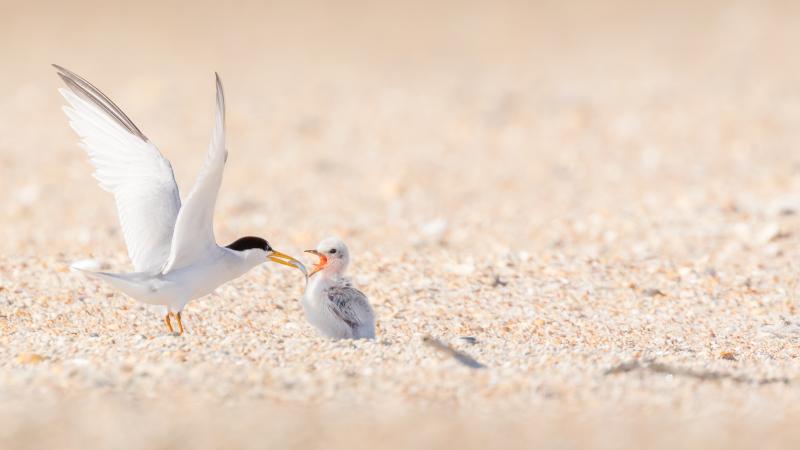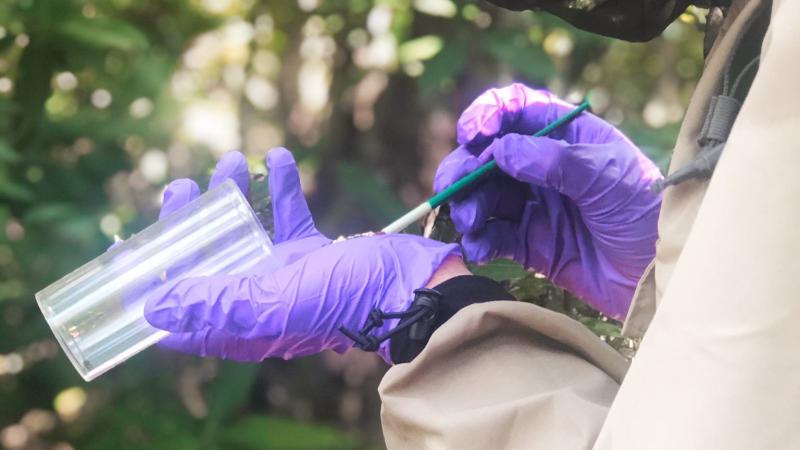Where to See the Florida Panther
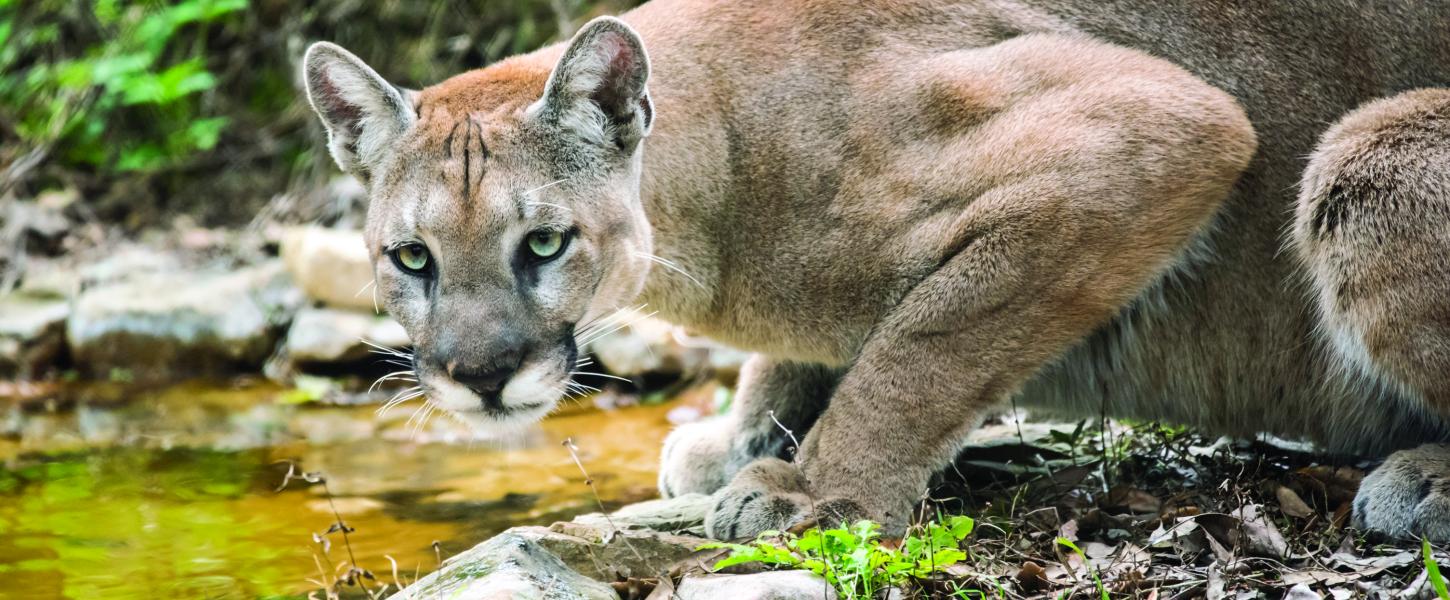
Every year on the third Friday of May, we observe Endangered Species Day.
At Florida’s state parks, we protect wildlife habitat by managing these critical lands and waters every day. We take special care of the habitats of endangered species.
Visitors sometimes ask where they are most likely to see the elusive Florida panther. Florida panthers are reclusive and normally live in remote, undeveloped areas. That means they are rarely seen by people.
Panthers and Bobcats
The Florida panther (Puma concolor coryi) is one of two native cat species in Florida, the other being the bobcat (Lynx rufus). Adult panthers are brown, about five to seven feet long, and can weigh between 60-160 pounds. From a distance, visitors cannot mistake the panther for another animal if they can see its tail. A panther’s tail is as long as its body. Bobcats are much smaller than the Florida panther and their tails are about one-third their body length.
Florida panther kittens are gray with dark brown or blackish spots and five bands around the tail. The spots gradually fade as the kittens grow older and by six months are almost unnoticeable.
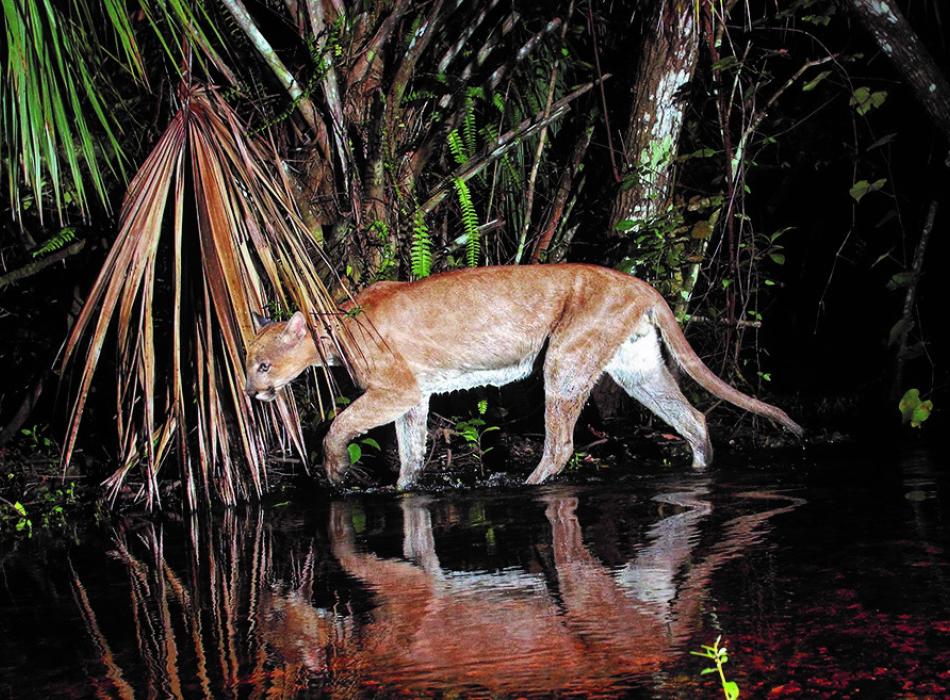
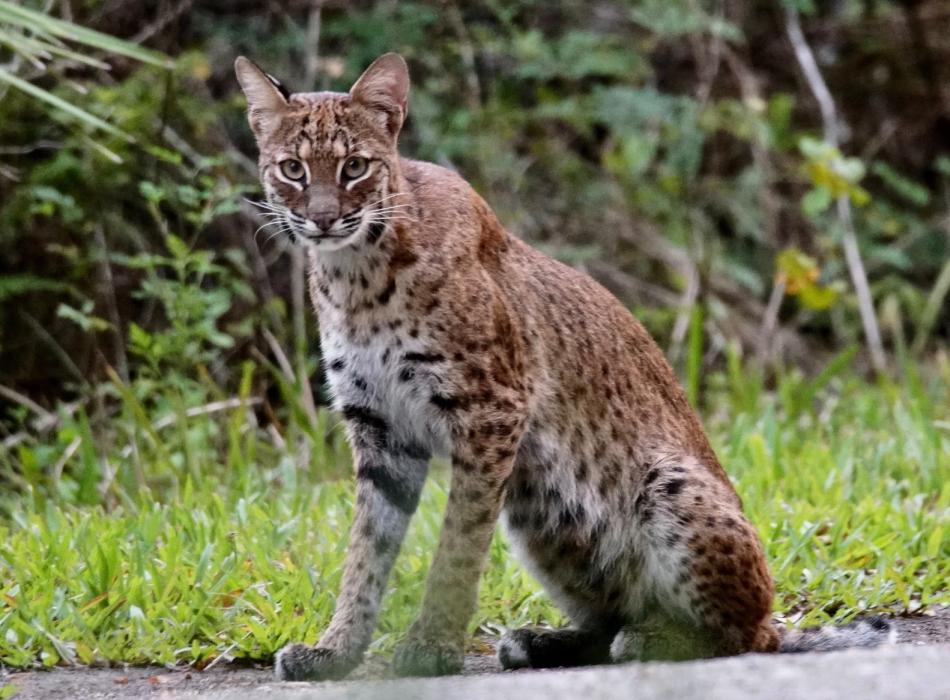
Bobcat sitting on the side of the road at Myakka River State Park, just east of Sarasota, Fla.
How many panthers are there?
Florida panthers are classified as an endangered species under the federal Endangered Species Act of 1973.
An endangered species is an animal or plant that is at risk of extinction. It is illegal to harm or harass an endangered species in any way. It is estimated that there are approximately 120 to 230 adult panthers in Florida.
What do panthers eat?
Panthers need large, connected areas with suitable food to survive. Florida panthers are carnivores, which means they only eat meat. They eat other animals they can stalk and capture, like white-tailed deer and wild hogs, but smaller mammals such as raccoons, armadillos and rabbits are also on the menu.
Where do Florida panthers live?
Florida panthers occur in the peninsula of Florida, primarily south of Orlando. Female panthers have been documented only in South Florida, which is where all known breeding occurs. The Florida Fish and Wildlife Conservation Commission has documented males as far north as Georgia.
Florida panthers prefer a dense understory of vegetation where they can hunt their prey, rest and provide dens for their cubs. They prefer forested areas, pinelands, tropical hardwood hammocks and mixed freshwater swamp forests.
Where might I see a Florida panther?
Seeing a Florida panther is a memorable experience. Visitors might see a Florida panther at one of these state parks.
- Fakahatchee Strand Preserve State Park serves as the western gateway to the Everglades. Some visitors are lucky enough to see fresh panther tracks or one of the big cats at a distance. This park’s swamps, towering royal palms and bromeliad-covered trees provide more than 77,000 acres of habitat for Florida panthers. Watch for panthers on a tram ride down Janes Scenic Drive.
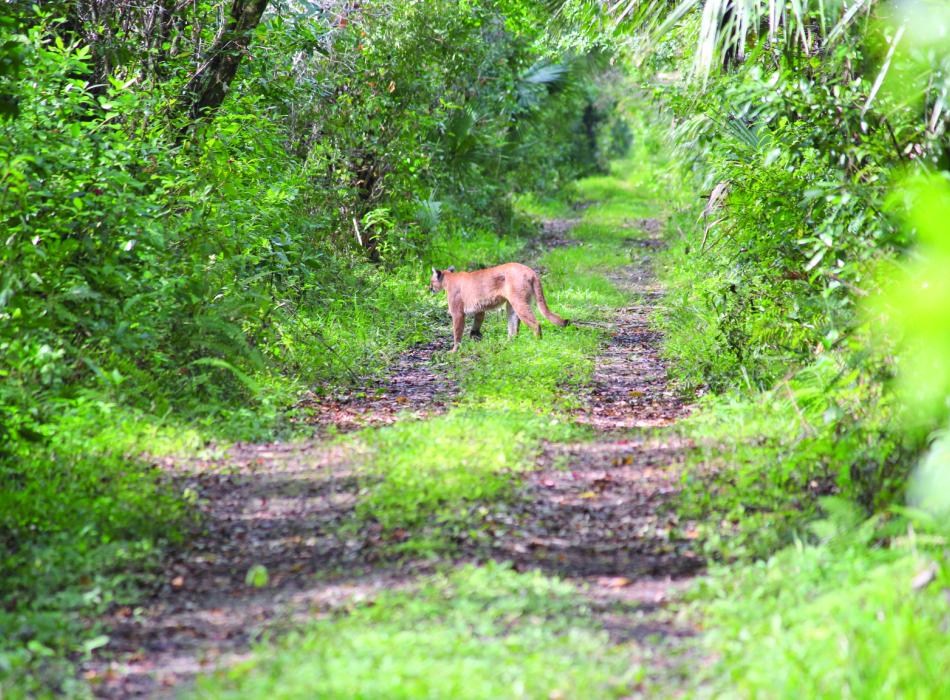
- Collier-Seminole State Park, located just south of Naples, is known for its beautiful royal palms and canoeing on the Blackwater River. Visitors who keep watch might see a Florida panther, likely early in the day or late in the evening.
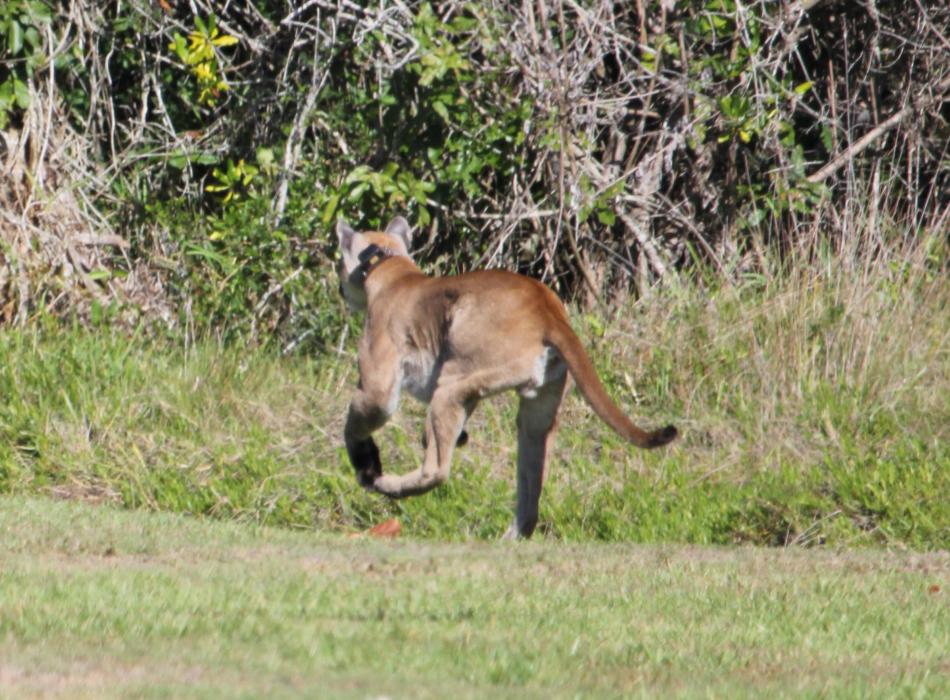
- Two Florida panthers are permanent residents at Ellie Schiller Homosassa Springs Wildlife State Park. Like the other native wildlife that reside in the park, they serve as ambassadors for their species. Unable to survive in the wild on their own, these two cats provide an opportunity for visitors to learn about their story.
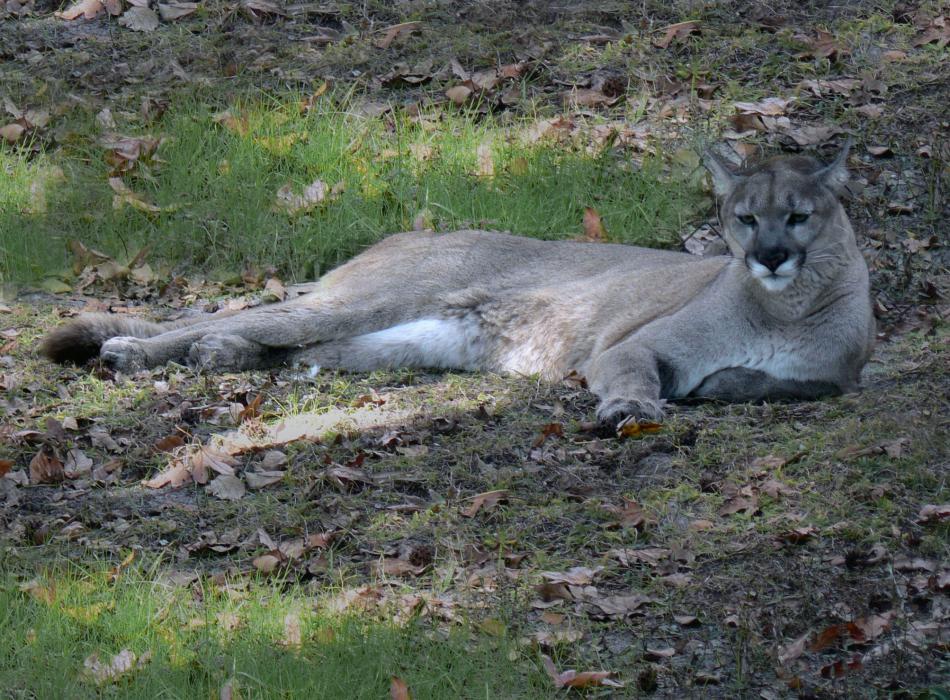
How You Can Help
The Florida panther faces numerous threats due to an increasing human population and development in their habitat. Most fatalities occur when Florida panthers are accidentally hit by motorists.
How can you protect them?
- Drive slowly when you are near Florida panther habitat. They are most active between dusk and dawn, so be alert.
- Protect their habitats and observe panther crossing signs and road laws.
Resources for Junior Rangers
- Florida panther critter sheet and coloring sheet.
This article was published in the Real Florida ℠ Connection, the Florida State Parks e-newsletter. Sign-up to get updates and stories from your state parks the first week of every month.
